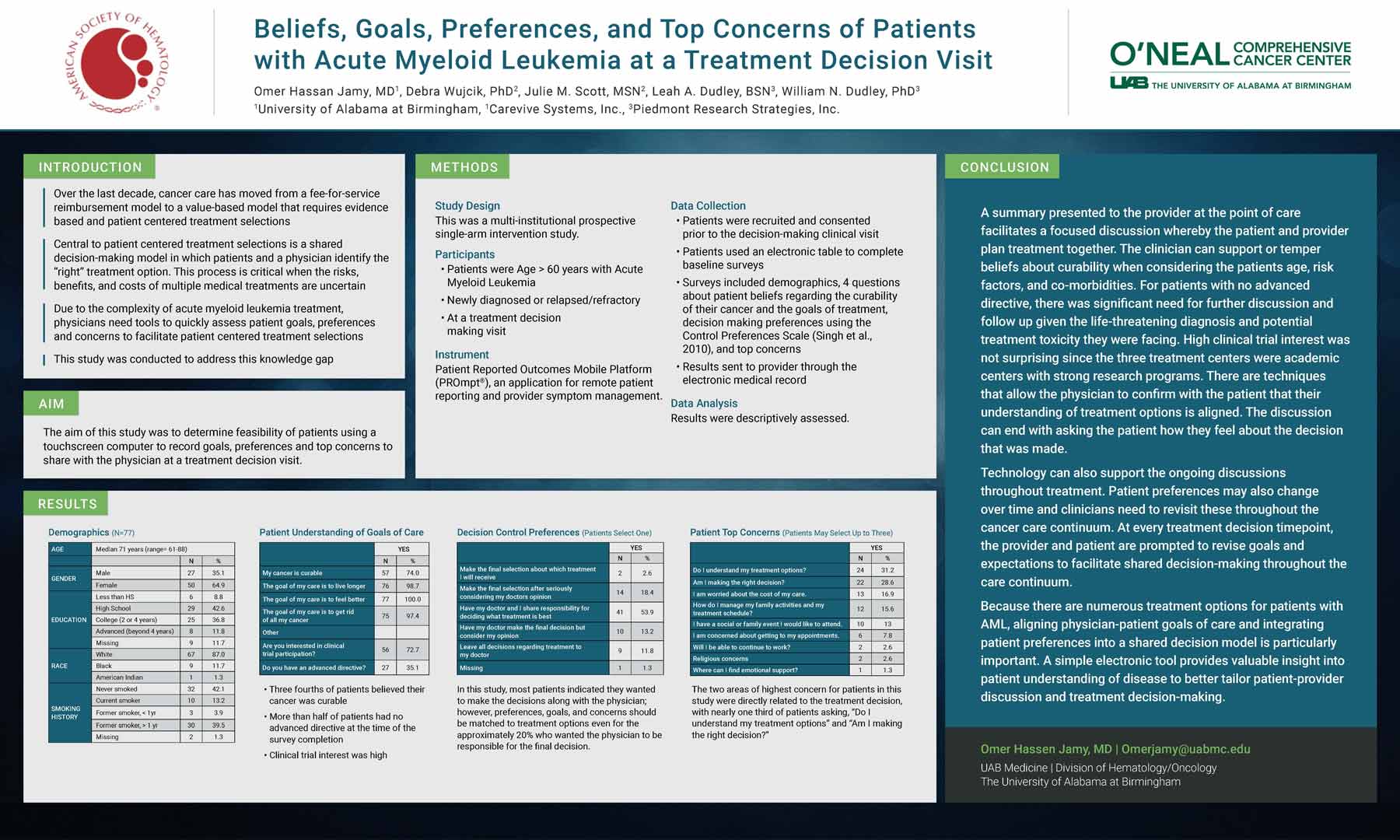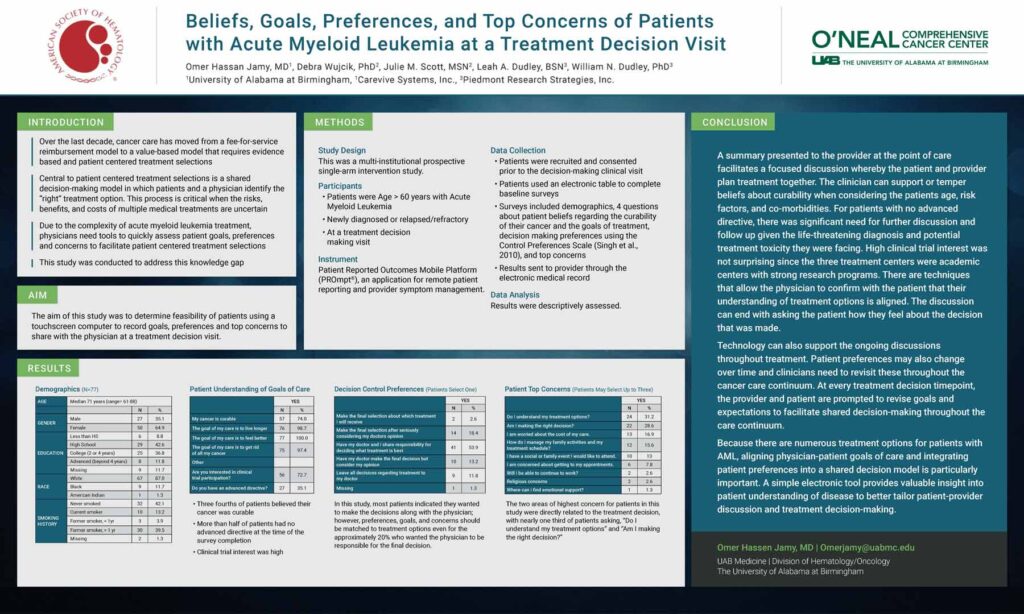
Author: Omer Hassan Jamy, MD1, Debra Wujcik, PhD2, Julie M. Scott, MSN2, Leah A. Dudley, BSN3, William N. Dudley, PhD3
1University of Alabama at Birmingham, 1Carevive Systems, Inc., 3Piedmont Research Strategies, Inc.
Introduction
Over the last decade, cancer care has moved from a fee-for-service reimbursement model to a value-based model that requires evidence based and patient centered treatment selections.
Central to patient-centered treatment selections is a shared decision-making model in which patients and a physician identify the “right” treatment option. This process is critical when the risks, benefits, and costs of multiple medical treatments are uncertain.
Due to the complexity of acute myeloid leukemia treatment, physicians need tools to quickly assess patient goals, preferences and concerns to facilitate patient centered treatment selections.
This study was conducted to address this knowledge gap.
Aim
The aim of this study was to determine feasibility of patients using a touchscreen computer to record goals, preferences and top concerns to share with the physician at a treatment decision visit.
Methods
Study Design
This was a multi-institutional prospective single-arm intervention study.
Participants
- Patients were Age > 60 years with Acute Myeloid Leukemia
- Newly diagnosed or relapsed/refractory
- At a treatment decision-making visit
Instrument
Patient Reported Outcomes Mobile Platform (PROmpt®), an application for remote patient reporting and provider symptom management.
Data Collection
- Patients were recruited and consented prior to the decision-making clinical visit
- Patients used an electronic table to complete baseline surveys
- Surveys included demographics, 4 questions about patient beliefs regarding the curability of their cancer and the goals of treatment, decision-making preferences using the Control Preferences Scale (Singh et al., 2010), and top concerns
- Results sent to provider through the electronic medical record
Data Analysis
Results were descriptively assessed.
Conclusion
A summary presented to the provider at the point of care facilitates a focused discussion whereby the patient and provider plan treatment together. The clinician can support or temper beliefs about curability when considering the patients age, risk factors, and co-morbidities. For patients with no advanced directive, there was significant need for further discussion and follow up given the life-threatening diagnosis and potential treatment toxicity they were facing. High clinical trial interest was not surprising since the three treatment centers were academic centers with strong research programs. There are techniques that allow the physician to confirm with the patient that their understanding of treatment options is aligned. The discussion can end with asking the patient how they feel about the decision that was made.
Technology can also support the ongoing discussions throughout treatment. Patient preferences may also change over time and clinicians need to revisit these throughout the cancer care continuum. At every treatment decision timepoint, the provider and patient are prompted to revise goals and expectations to facilitate shared decision-making throughout the care continuum.
Because there are numerous treatment options for patients with AML, aligning physician-patient goals of care and integrating patient preferences into a shared decision model is particularly important. A simple electronic tool provides valuable insight into patient understanding of disease to better tailor patient-provider discussion and treatment decision-making.

